
In a world where everyone is screaming for attention, Heinz Lange is an enigma. He has no catchy workshop name, no website and absolutely zero social media presence. He’s simply a retired aficionado with a proclivity for collecting and working on classics—like the Norton Manx that’s parked in his living room.
That’s why we only found out about Heinz via a friend of a friend. And he only popped up on their radar because he’d just finished this stunning Triumph Trackmaster.
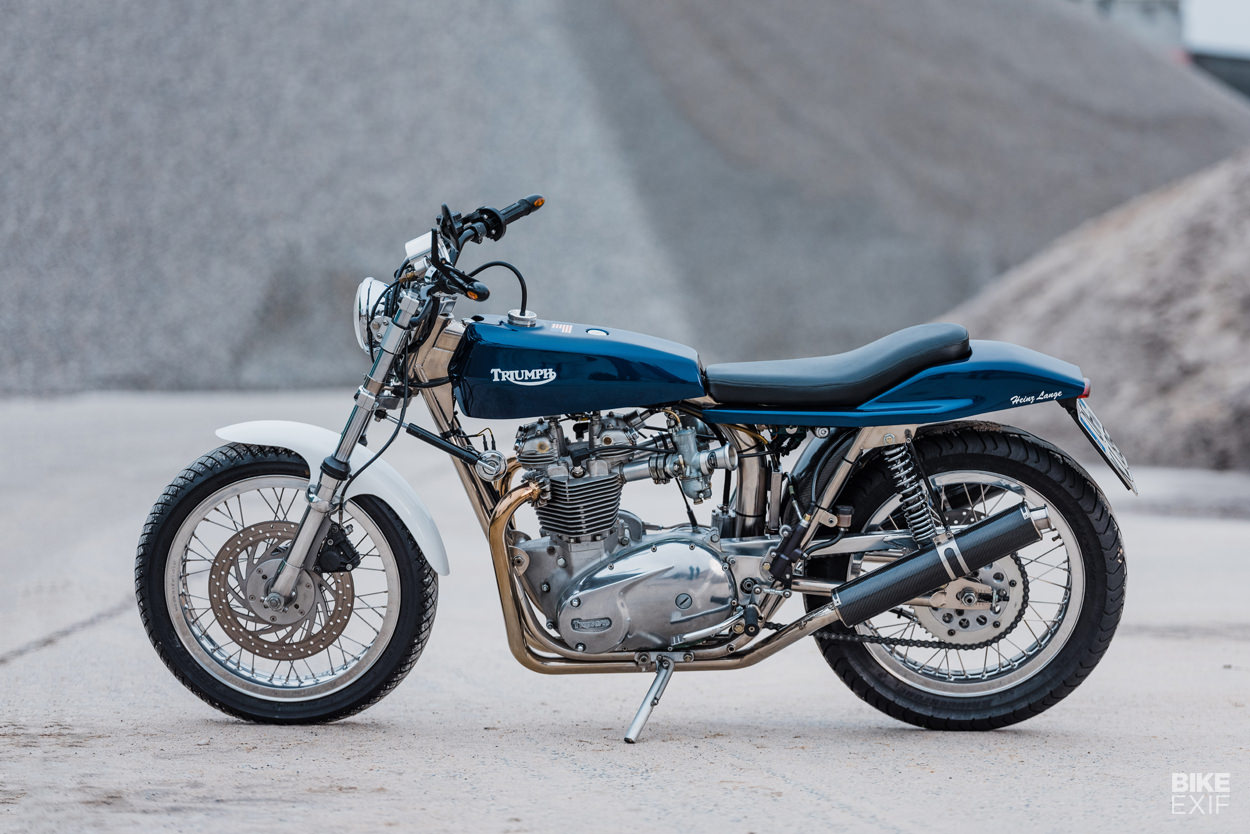
Heinz built the Triumph pretty much from scratch, at his home garage in Sprendlingen, a small winegrowing town in western Germany. His goal was to build as original a Trackmaster Triumph as possible, stripped down to just the essentials—but street legal.
“The first time I saw Trackmaster-framed Triumph motorcycles,” he tells us, “was when I was at Daytona for the AHRMA classic series. The way those guys charged their Trackmaster twins into the corners was awesome.”
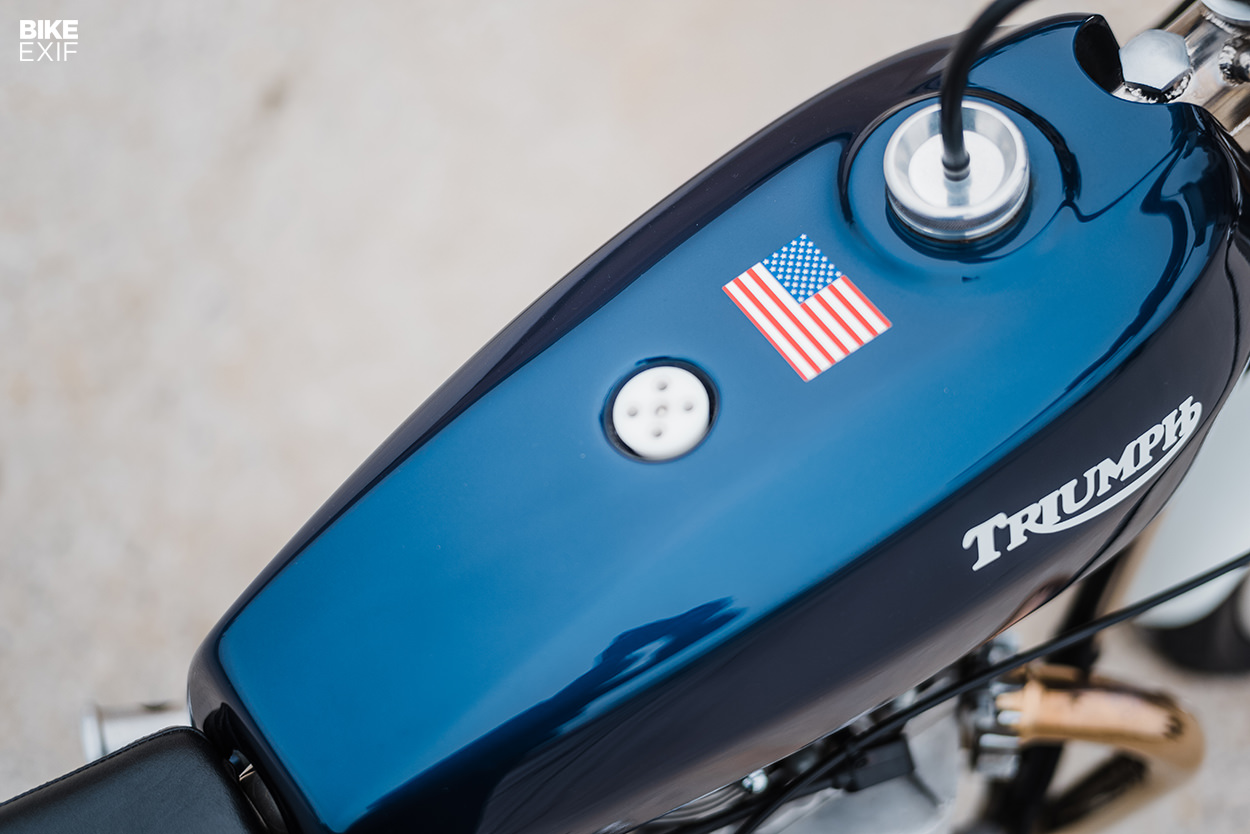
“Those bikes had a specific style—not just the paint jobs and the shape of the dirt track seats and tanks, but the complete bikes fascinated me. All of them had only what was needed to ride them.”
“Years later, at a bike meeting in California, I saw a bunch of street legal Trackmasters. So I decided to build one for myself too. It had to be a Trackmaster frame, nickel-plated, short wheel base.”
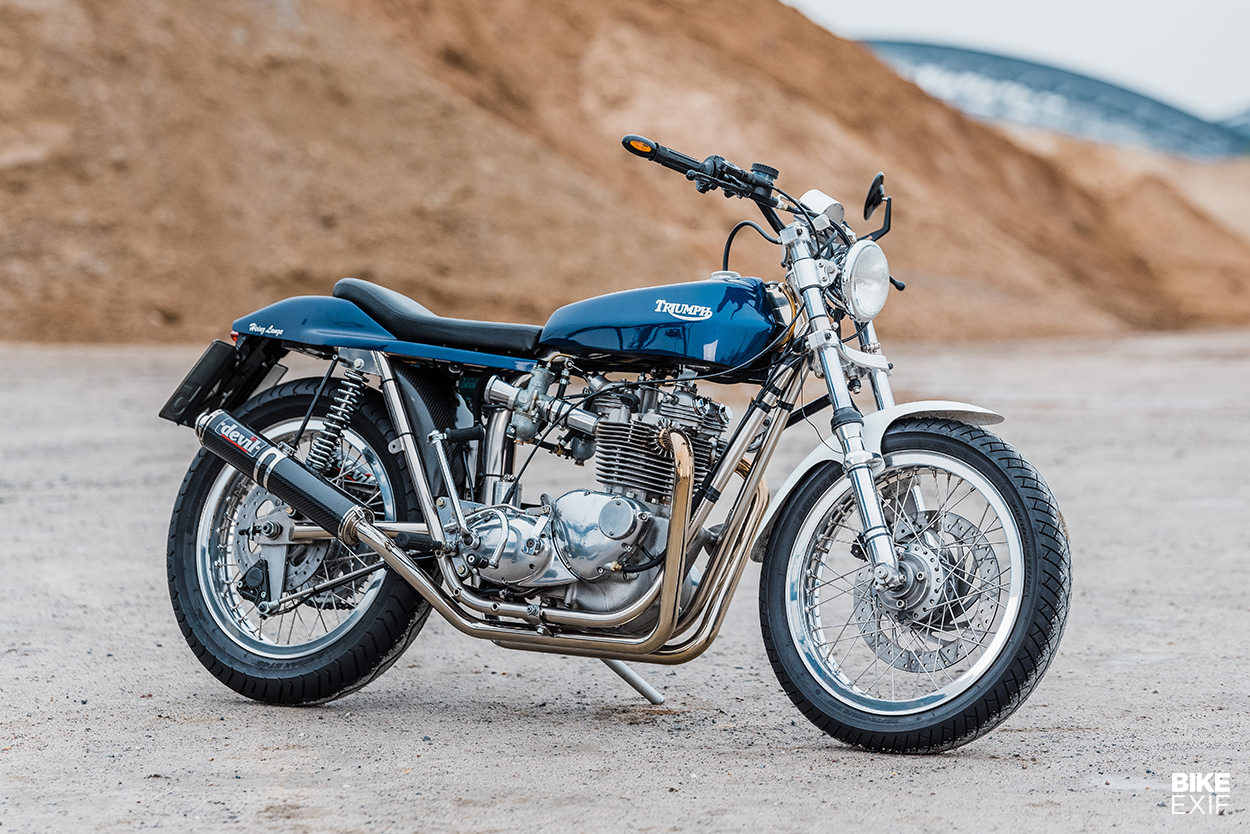
Remarkably, the only second hand part Heinz started with was the motor. It’s from a 1971 Triumph T120R, picked up at a flea market in Daytona for $500. But once it was stripped, Heinz realized that only the crankcase and crankshaft were usable.
He rebuilt the engine to an eye-watering spec. It now uses full racing camshafts, aluminum barrels, and a belt drive with an alloy clutch basket. The gearbox is a five-speed unit from a T140, and there’s a three-phase generator, electronic regulator and ignition.

The carbs are Amal concentric smooth bore units, rubber mounted on the inlet stubs. And the exhaust consists of custom-built headers, terminating in a pair of Devil mufflers—chosen despite their modern looks, simply because they weigh a mere 800 grams each.
Before Heinz redid the motor, he’d already phoned Kennedy Racing in Witchita, Kansas, to custom order his Trackmaster frame and kit. Going off the engine number, frame builder Roger Attebury was able to match all the mounting points for this particular motor, making it a plug and play affair.
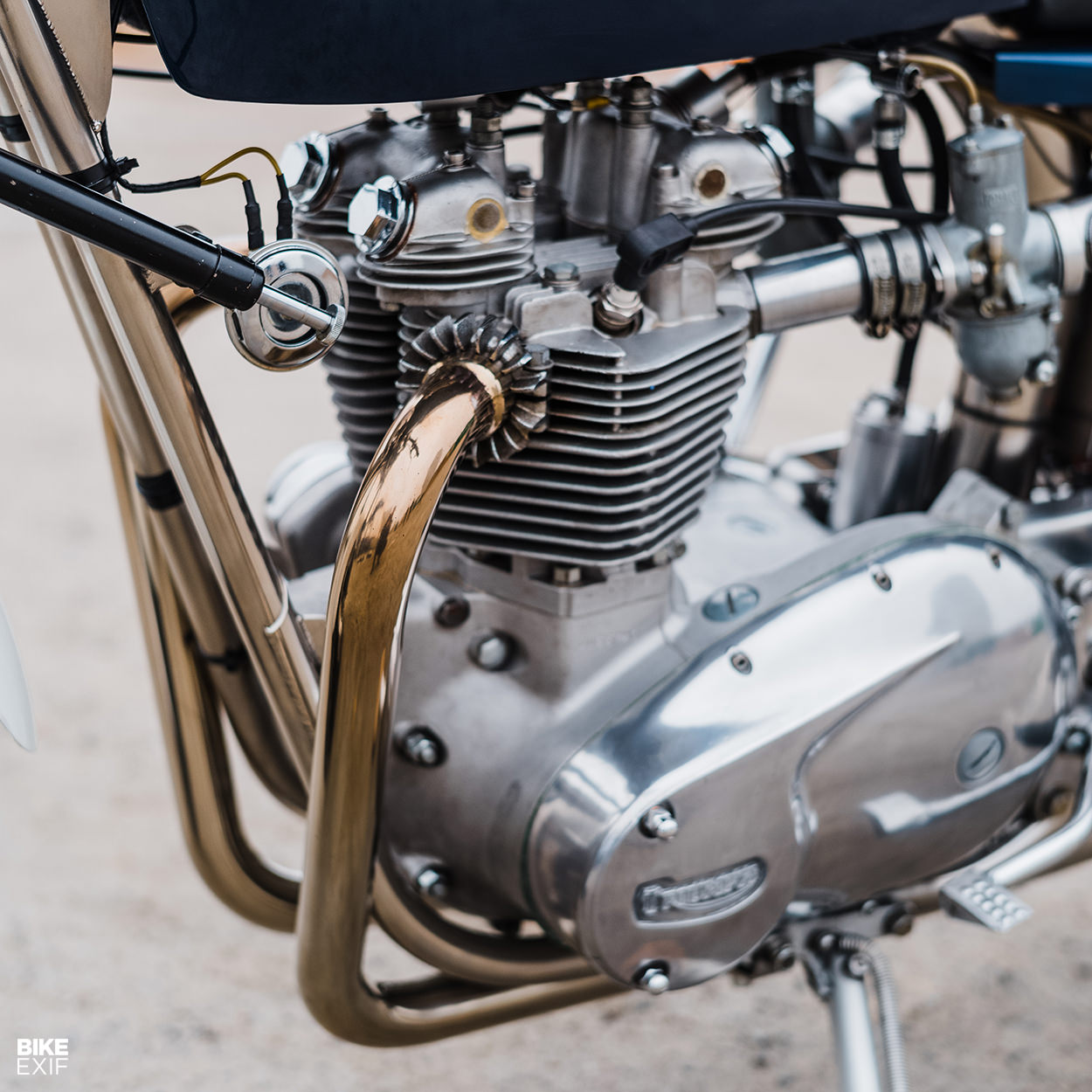
Getting the frame geometry right was key, since the bike was destined for street use. “It’s the geometry the dirt track racers use on the long mile,” Heinz explains, “where they have a top speed of around 160 km/h on the straights.”
It took a year and three months for the frame to arrive, but then the project started coming together. The full kit consisted of not only the frame and swing arm, but also the yokes, tank and tail unit.
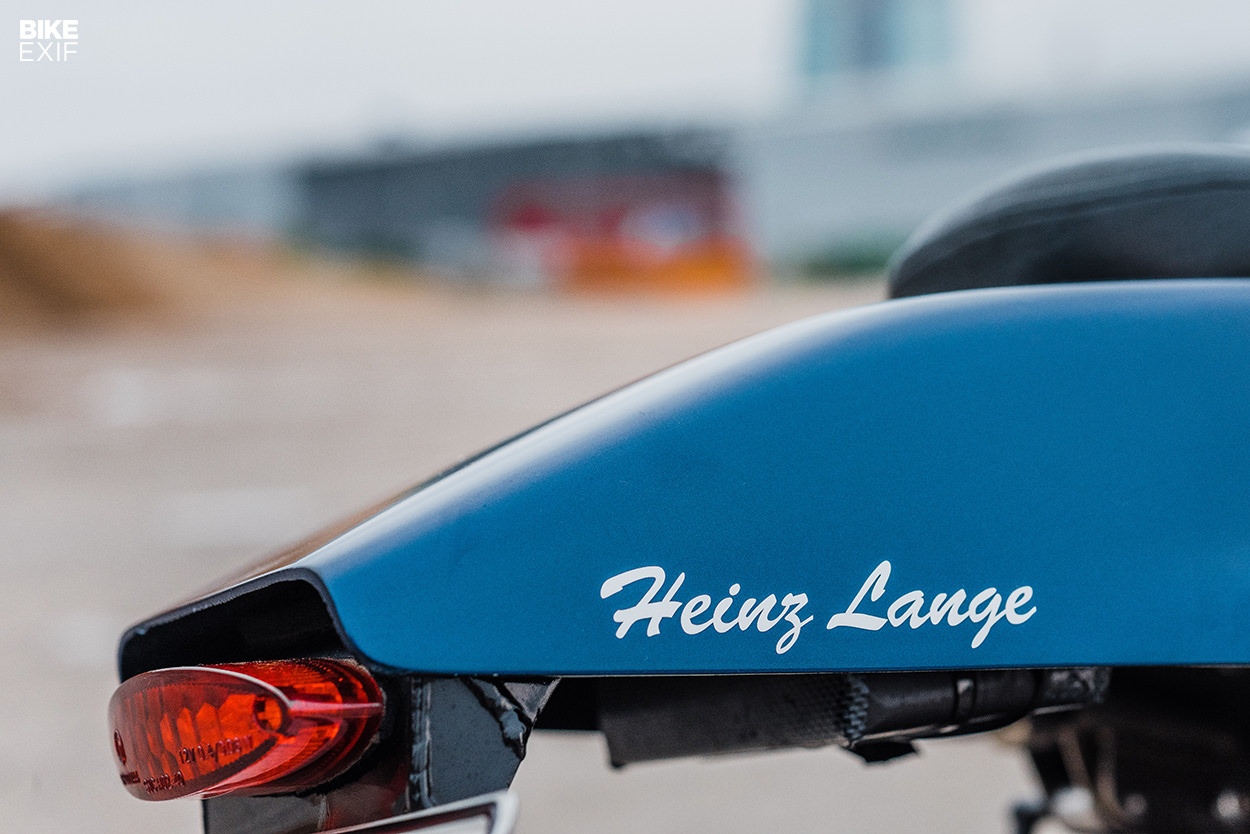
Heinz completed the rolling chassis with a set of 35 mm Ceriani forks, and a pair of Hagon rear shocks. There’s a steering stabilizer too, and the wheels are 18×2.5” units at both ends, shod with Bridgestone Battlax rubber.
For the brakes, Heinz matched BMW discs to Grimeca calipers. But it was a tricky process—the fork lowers and swingarm had no mounting points for the calipers, and the wheel hubs had to be modded to accept the BMW discs. After sketching out some ideas and machining the final parts, Heinz manage to make everything fit (and look) like it belonged.

The Trackmaster frame didn’t have mounting points for things like an ignition switch, battery tray or side stand—so Heinz had to get crafty. “To put all these ordinary things onto the bike to get it street legal,” he tells us, “without damaging the style of the bike, was not easy.”
Heinz picked titanium sheet metal for the battery tray and engine breather collector—a metal he hadn’t work with before. He tackled all the drilling, cutting and bending of the titanium himself, but admits that welding it was outside of his skillset, so he outsourced that.
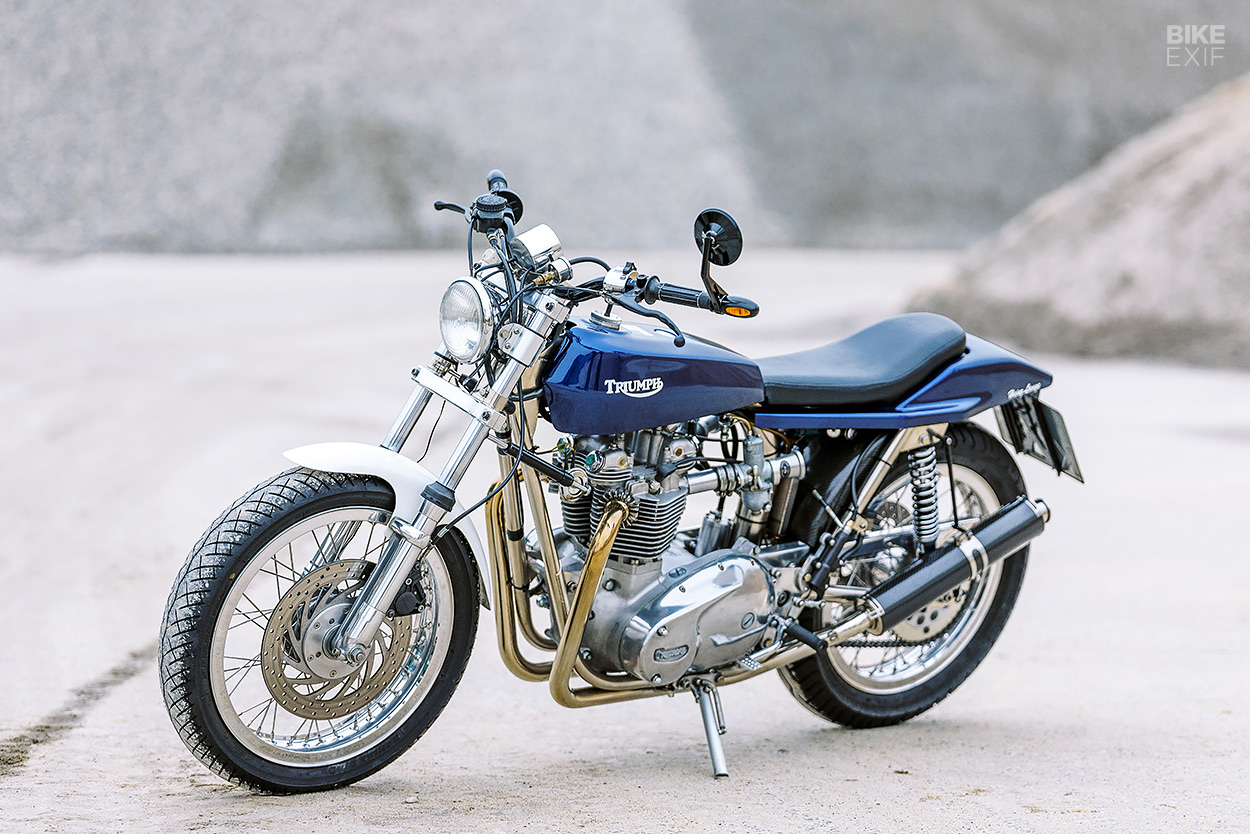
The paint was handled at the classic car workshop of Heinz’s friend, Norbert Prokschi. It has a classic feel to it, but it’s actually a modern color; Peugeot’s ‘China Blue.’
Unlike the race bikes it’s based on, this Triumph has lights at both ends, turn signals, and even a license plate bracket. Finishing kit includes a speedo and tach combo from a Ducati, and a carbon fiber rear inner fender.
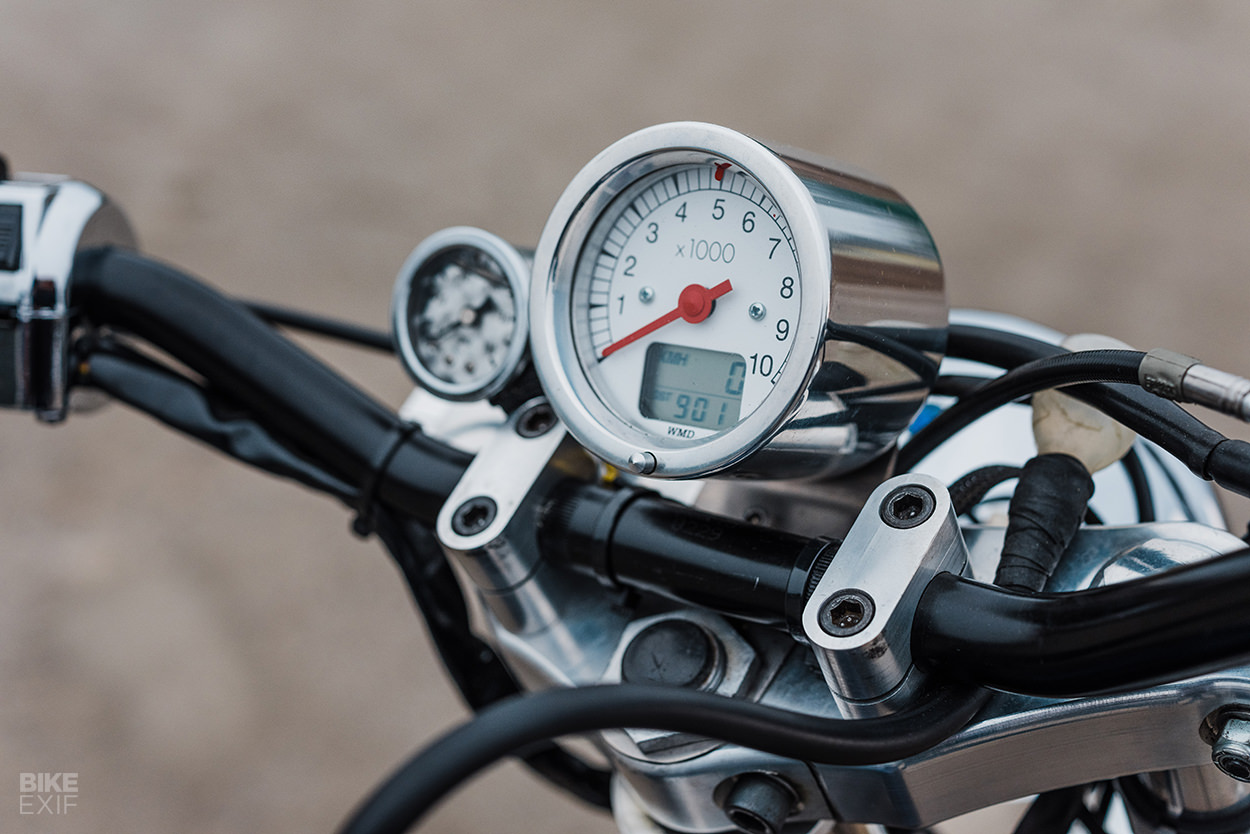
It took Heinz two years to complete the project, with about 1,000 hours of work. We’d say it was worth it—his Triumph is a showstopper, and encapsulates the Trackmaster era perfectly. Weight is just 138 kg (305 pounds) with an engine output of 55 PS, so there’s plenty of entertainment on hand.
“The handling of the bike is totally different to my Triumph T140,” Heinz tells us. “An open country road with as many curves as possible is the right environment. And also on smaller race tracks, the Triumph handles perfectly.”

“After a ride, when I am back home and the bike is sitting in my driveway in the sun, and I see the sparkling blue metallic color…that is always a good view.”
That’s a feeling we all know, isn’t it?
Images by, and thanks to, Marc Holstein.
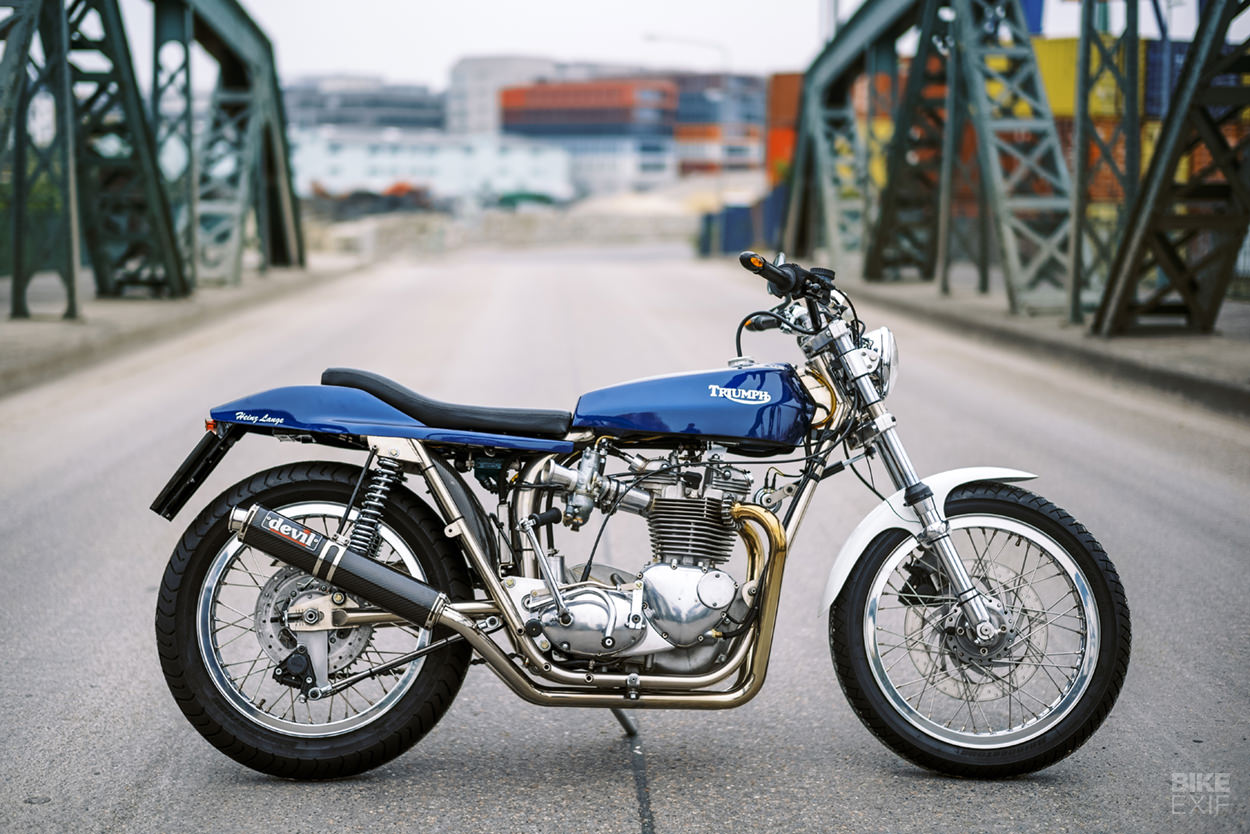
from Bike EXIF https://ift.tt/2OocaBS
No comments:
Post a Comment